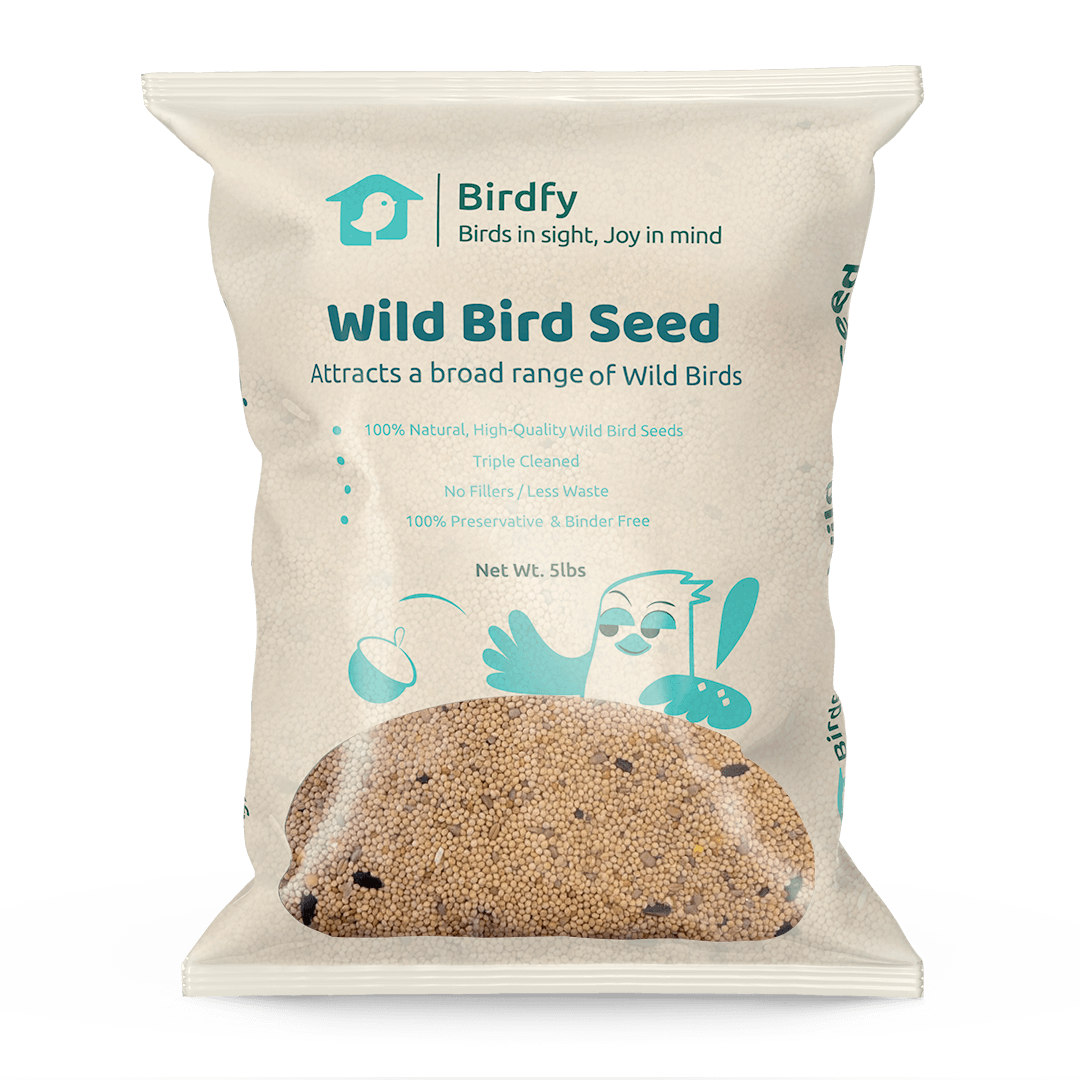Bird courtship - the complex rituals and performances aimed at ensuring mating and breeding success - is a fascinating aspect of bird behaviour. Seasonal and environmental factors have a significant impact on these practices and influence reproductive patterns and habitat selection.
Seasonal Influence on Bird Courtship
The importance of the brewing season is that it has a profound effect on bird reproduction, determining behaviour and ecological dynamics. Bird behaviour changes uniquely with the seasons throughout the year, and each season presents unique challenges and opportunities for successful breeding.
Spring
As sunlight increases and temperatures warm up, many birds experience hormonal changes and courtship behaviour increases. Males become more vocal, singing intricate songs to establish territories, and perform elaborate displays such as flutter or complex dances to show their fitness and attract females. Meanwhile females choose mates based on vigour, health and territorial quality, making spring a critical time for courtship and pairing.
Summer
As summer progresses,
courtship behaviour gradually declines and the peak of the reproductive season shifts to feeding the offspring. Males continue to engage in territorial defence and foraging but are less likely to perform elaborate displays. Males devote their energy to nest building, incubation and feeding their young, thus reducing the frequency of courtship. But some species may perform brief rituals between breeding sessions.
Autumn
Courtship behaviour decreases further in autumn as many species enter post-breeding dispersal or migration. Mating pairs keep in touch by mutual grooming or co-operative foraging, but the urgency of courtship is lessened. Some birds form migratory flocks and engage in social behaviours such as flock calling. As birds prepare for migration or adapt to changing environments, conserve energy for the journey or refill fat reserves, courtship is rarely seen.
Winter
In winter, most birds' courtship behaviour is suppressed, because survival takes precedence over reproduction at this time. As temperatures drop and food becomes scarce, birds prioritise energy conservation and efficient foraging, so courtship behaviour rarely occurs.
Environmental Factors Affecting Bird Courtship
The mating behaviour of birds is strongly influenced by environmental factors, including habitat features and climatic patterns. These factors intricately affect bird mate choice and reproductive success, highlighting the adaptive nature of courtship behaviour.
Habitat characteristics and their impact on courtship rituals
Indeed, habitat traits have a deep impact on the birds' courtship behaviour, influencing mate choice and courtship performance in different ways. For example, in open grasslands, where visibility and space are available, birds may employ elaborate aerial performances, such as soaring flights or sky-pointing acts, to show off their physical prowess and attract potential mates. These open habitats provide ideal conditions for birds to display their fitness and territorial dominance.
In contrast, dense forests offer a different environment for courting behaviour, where thick foliage may hinder visual presentation of a potential spouse. These birds may produce complex calls or use visual clues in the leaves to attract mates. In addition, the presence of specific habitat features (e.g., perches or niches) can serve as focal points for courtship activity, facilitating interactions between individuals and enhancing the effectiveness of a courtship show.
Climate and weather patterns influencing courtship displays
However, extreme weather events such as storms, droughts or unusual temperature fluctuations can disrupt
courtship displays and reduce breeding success. Severe weather may interfere with the availability of food resources, distort nesting sites, or directly threaten the survival of eggs and chicks. In addition, unpredictable weather patterns associated with climate change can further challenge birds' courtship behaviour by altering habitat suitability, mismatches between phenology and food availability, and disrupting migration patterns. Birds may respond to these environmental changes by adjusting their breeding habits, shifting their ranges or changing their courting behaviour.

However, extreme weather events such as storms, droughts, or unseasonable temperature fluctuations can also disrupt courtship displays and decrease reproductive success. Severe weather may interfere with the availability of food resources, disturb nesting sites, or pose direct threats to the survival of eggs and nestlings. Additionally, unpredictable weather patterns associated with climate change can further challenge bird courtship behaviors by altering habitat suitability, phenological mismatches with food availability, and disrupting migratory patterns. Birds may respond to these environmental changes by adjusting their breeding phenology, shifting their ranges, or modifying courtship behaviors.
Case Studies: Examples of Seasonal and Environmental Influence
Migratory bird species and their courtship adaptations
Migratory bird species are typical of the far-reaching influence of seasonal and environmental factors on courtship behaviour. These birds undertake extensive migrations between breeding and wintering grounds, encountering different environmental conditions and challenges along the way. Remarkably, their courtship behaviour is synchronised with the migration and breeding seasons. For example,
Arctic terns migrate long distances from the Arctic to the Antarctic, and their courtship performances coincide with their return to their colony. Male terns perform elaborate aerial displays and vocalisations on arrival to attract mates and ensure successful pairing and breeding during the short Arctic summer. In addition, some shorebirds alter courtship shows in response to changes in food availability and habitat quality encountered during migration. These adaptations emphasise the intricate interplay between migration, environmental cues and courtship strategies to ensure breeding success.

Influence of urbanization and habitat alteration on courtship behaviors
Urbanisation and habitat modifications present a great challenge to bird courtship behaviour by altering natural landscapes and introducing environmental pressures. Urban environments that lack structural diversity and habitat complexity can lead to changes in bird behaviour and courtship displays. For example, urban noise pollution interferes with key communication signals that attract mates and pair bonding in some species. Habitat modification, including habitat fragmentation and loss of nesting sites, can further affect courtship behaviour by reducing suitable breeding sites and disrupting mating systems.
In summary, the effects of seasonal reasons and environmental incentives on birds' courtship behaviour are insightful and complex. Recognizing and comprehending these effects is critical to understand the ecology and behaviour of birds in different habitats and ecosystems.







































